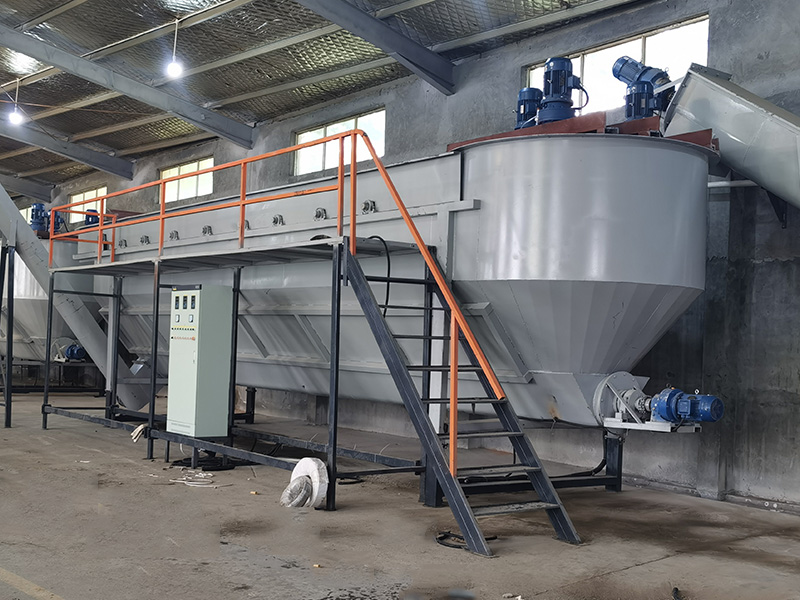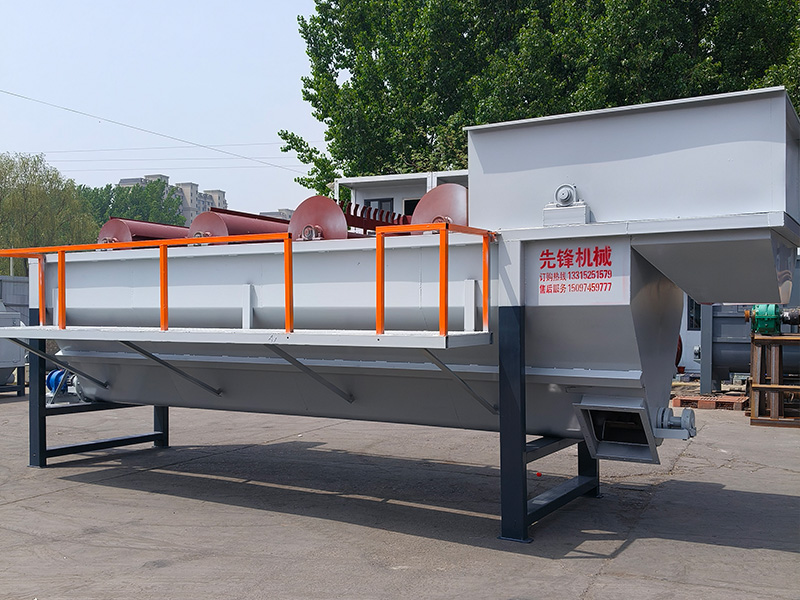Innovative Solutions: How Flotation Tanks Enhance Plastic Recycling Efficiency
Innovative Solutions: How Flotation Tanks Enhance Plastic Recycling Efficiency
Table of Contents
1. Introduction to Plastic Recycling Challenges
2. The Role of Flotation Tanks in Recycling
3. Understanding Flotation Technology
4. Benefits of Flotation Tanks in Plastic Recycling
5. Case Studies and Success Stories
6. Choosing the Right Flotation Tank for Your Needs
7. E
Jun 07,2025

Innovative Solutions: How Flotation Tanks Enhance Plastic Recycling Efficiency
Table of Contents
- 1. Introduction to Plastic Recycling Challenges
- 2. The Role of Flotation Tanks in Recycling
- 3. Understanding Flotation Technology
- 4. Benefits of Flotation Tanks in Plastic Recycling
- 5. Case Studies and Success Stories
- 6. Choosing the Right Flotation Tank for Your Needs
- 7. Environmental Impact of Flotation Tanks
- 8. The Future of Plastic Recycling with Flotation Technology
- 9. Conclusion
- 10. FAQs
1. Introduction to Plastic Recycling Challenges
The plastic industry faces numerous challenges, particularly concerning waste management and recycling. As global plastic production continues to rise, the environmental impact becomes increasingly significant. Many plastics end up in landfills or oceans, contributing to pollution and harming marine life. Effective recycling processes are essential to mitigate these issues, and innovative technologies like flotation tanks are emerging as vital solutions.
2. The Role of Flotation Tanks in Recycling
Flotation tanks play a crucial role in the plastic recycling process by separating contaminants from recyclable materials. This technology utilizes the differences in density among materials to effectively isolate valuable plastics. By introducing air bubbles into a slurry of plastic waste, lighter impurities rise to the surface, allowing for easy removal. This method significantly enhances the efficiency of recycling operations, leading to higher purity levels in recycled plastics.
3. Understanding Flotation Technology
Flotation technology is a sophisticated method employed in various industries, including mining and wastewater treatment, and its application in plastic recycling is gaining traction. The fundamental principle behind flotation is the attachment of air bubbles to solid particles. In plastic recycling, the process involves several steps:
3.1 Preparation of Material Slurry
Initially, plastic waste is shredded and mixed with water to create a slurry. This preparation stage is crucial as the size and consistency of particles can significantly affect the flotation process.
3.2 Introduction of Air Bubbles
Once the slurry is prepared, air is introduced into the tank. The design of the flotation tank is engineered to optimize bubble size and distribution, ensuring maximum contact with the plastic particles.
3.3 Separation of Contaminants
As the air bubbles rise, they attach to lighter contaminants, such as labels, dirt, and other impurities. This attachment causes them to float to the surface, forming a froth that can be easily skimmed off, leaving behind cleaner, recyclable plastic.
3.4 Recovery and Processing
The remaining slurry, now enriched with high-quality plastic, undergoes further processing to ensure it meets the required specifications for reuse. This may involve drying, additional washing, or granulation.
4. Benefits of Flotation Tanks in Plastic Recycling
Utilizing flotation tanks in plastic recycling offers numerous advantages that can transform the efficiency and effectiveness of recycling operations:
4.1 Enhanced Purity of Recycled Materials
The primary benefit of flotation tanks is the significant increase in the purity of recycled plastics. By efficiently removing contaminants, the process yields higher quality materials that can be reused in manufacturing, thus closing the recycling loop.
4.2 Increased Recovery Rates
Flotation tanks allow for higher recovery rates of plastics compared to traditional methods. This efficiency translates into more recyclables being processed, ultimately reducing the overall waste generated.
4.3 Cost-Effectiveness
While the initial investment in flotation tank technology may be substantial, the long-term savings achieved through increased efficiency and reduced waste disposal costs can be significant. More efficient operations lead to lower operational costs and higher profitability.
4.4 Flexibility and Adaptability
Flotation tanks can be adapted to process various types of plastics, making them versatile solutions for different recycling facilities. This adaptability is crucial as the types of plastics being recycled continue to diversify.
5. Case Studies and Success Stories
Several recycling facilities worldwide have successfully implemented flotation tank technology, showcasing its advantages:
5.1 Success Story: Company A
Company A, a leading recycling facility in North America, adopted flotation tanks and reported a 30% increase in the purity of their recycled plastics. This improvement allowed them to expand their client base, as more manufacturers sought high-quality recycled materials.
5.2 Success Story: Company B
Company B, based in Europe, integrated flotation technology into their recycling process, resulting in a dramatic reduction in operational costs. They achieved a higher recovery rate, enabling them to process more plastic waste without additional expenditure.
6. Choosing the Right Flotation Tank for Your Needs
Selecting the appropriate flotation tank is vital for maximizing efficiency and effectiveness in recycling operations. Here are some key considerations:
6.1 Assessing Material Types
Understanding the types of plastics you will process is crucial, as different materials may require specific flotation tank designs and configurations.
6.2 Evaluating Capacity Requirements
Facilities must assess their processing capacity to ensure the flotation tank can handle the volume of waste being processed efficiently.
6.3 Consulting with Experts
Engaging with manufacturers and industry experts can provide valuable insights into the most suitable flotation tank options tailored to your specific needs.
7. Environmental Impact of Flotation Tanks
The implementation of flotation tanks in plastic recycling not only enhances operational efficiency but also contributes positively to environmental sustainability. By increasing the volume of recycled materials, these systems help reduce the demand for virgin plastic production, which is a significant contributor to carbon emissions and environmental degradation.
7.1 Reducing Landfill Waste
Flotation technology aids in diverting plastic waste from landfills, reducing the overall environmental footprint associated with improper disposal.
7.2 Promoting a Circular Economy
By enhancing recycling rates, flotation tanks support the development of a circular economy, wherein plastics are continuously reused and recycled, minimizing waste and promoting sustainability.
8. The Future of Plastic Recycling with Flotation Technology
The future of plastic recycling looks promising with the ongoing advancements in flotation technology. Continued research and development are likely to yield even more efficient systems, incorporating automation and artificial intelligence to optimize operations further.
8.1 Innovations on the Horizon
Emerging technologies, such as machine learning and real-time data analytics, will enhance the precision and effectiveness of flotation tanks, making them even more valuable in recycling efforts.
8.2 Policy and Regulatory Support
As governments worldwide emphasize sustainability, policies promoting advanced recycling technologies like flotation tanks will likely emerge, providing incentives for facilities to adopt these innovative solutions.
9. Conclusion
Flotation tanks represent a transformative advancement in the field of plastic recycling, providing efficient and effective solutions to some of the industry's most pressing challenges. By enhancing the purity and recovery rates of recycled materials, flotation technology not only benefits recycling facilities but also contributes significantly to environmental sustainability. As we look toward the future, the integration of flotation tanks in recycling operations is poised to play a crucial role in building a more sustainable and circular economy.
10. FAQs
10.1 What are flotation tanks used for in plastic recycling?
Flotation tanks are employed to separate contaminants from plastic waste, enhancing the purity of recycled materials.
10.2 How do flotation tanks improve recycling efficiency?
By effectively removing lighter impurities, flotation tanks increase recovery rates and produce higher-quality recycled plastics.
10.3 Are flotation tanks cost-effective for recycling facilities?
While the initial investment may be high, the long-term savings and increased efficiency can yield significant cost benefits.
10.4 Can flotation technology process different types of plastics?
Yes, flotation tanks can be adapted to handle various types of plastics, making them versatile solutions for recycling facilities.
10.5 What is the environmental impact of using flotation tanks?
By increasing recycling rates and reducing landfill waste, flotation tanks contribute to a more sustainable and environmentally friendly recycling process.
TAG:
Contact Us
E-mail :
Phone/WhatsApp:
Address:
Shunping, Baoding City, Hebei Province









